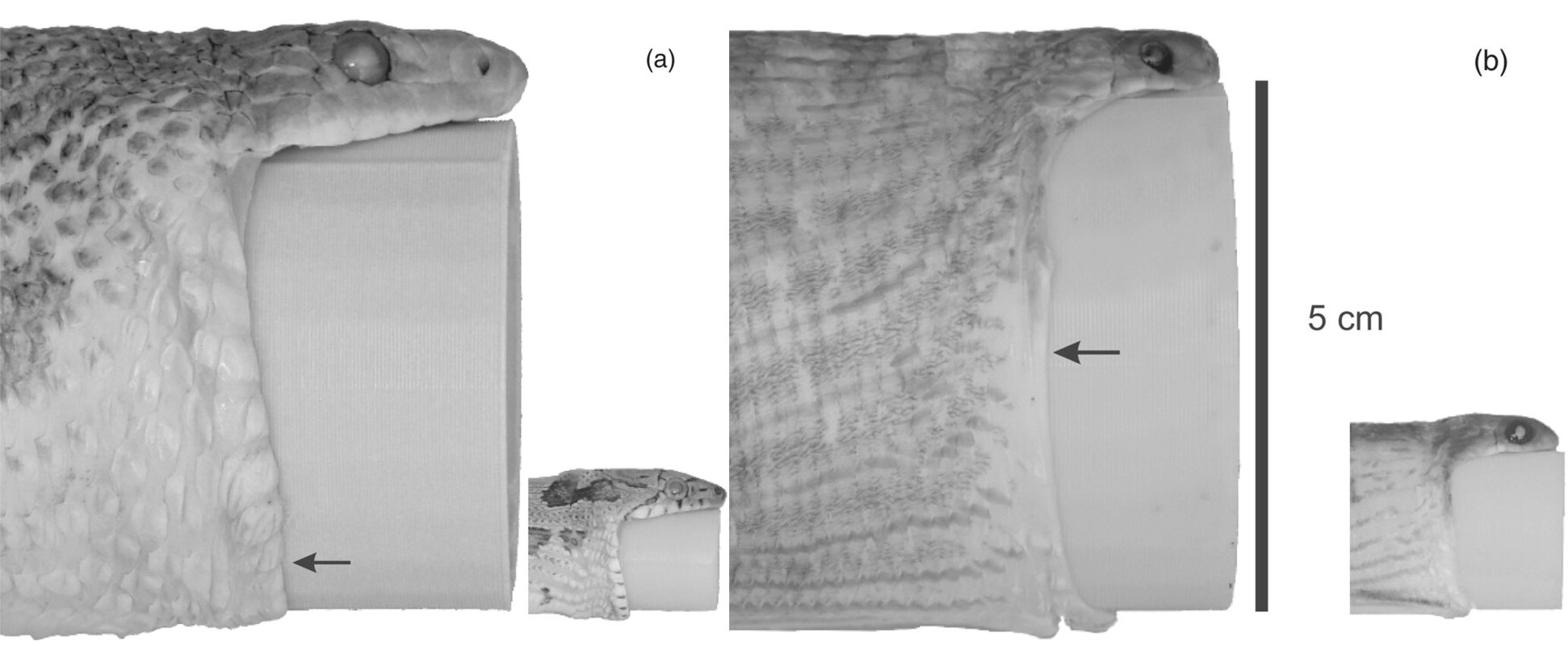A recent study has identified a snake that’s able to open its mouth wider than any known species of its size. Scared? Well, you should be if you’re an egg. The tiny Gans’s egg-eater puts the colossal Burmese python to shame when comparing maximum gape in relation to body size.
The author of the study – Bruce Jayne of the Department of Biological Sciences, University of Cincinnati – set out to compare the maximum gape sizes of Gans’s egg-eaters (Dasypeltis gansi) and black rat snakes (Pantherophis obsoletus).
As the name suggests, “egg-eaters” are a group of 18 Dasypeltis species that feed exclusively on eggs. The study’s comparison of this species to a rat snake – which eats a wide variety of prey including the occasional egg – aims to establish the relationship between dietary habits and gape size.
With both species belonging to the family Colubridae, Gans’s egg-eaters are native to much of the western regions of Africa. With a slender tube-like body and distinct lack of neck, this arboreal, nonvenomous species grows to around 76 centimeters (30 inches) long and spends much of its time nicking eggs out of bird nests.
As all snakes do, egg-eaters consume their large, round food whole, using the ventral spines on the neck vertebrae to crack the shells, which they then regurgitate.
The study looked at 15 euthanized egg-eater specimens that ranged in size from around 20 to 90 centimeters (7.8–35.4 inches). Using 3D-printed cylinders, the maximum mouth gape was measured by inserting the objects in increasing sizes into the snakes’ mouths.

(a) Shows the largest and second smallest of the rat snake specimens. (b) Shows the largest and smallest egg-eater specimens.
Image credit: Bruce C. Jayne
The largest of the specimens examined had a head just 1 centimeter (0.39 inches) wide but was able to swallow a cylinder roughly 5 centimeters (1.96 inches) in diameter. For comparison, previous data indicates that if a Burmese python (Python molurus bivittatus) were shrunk to a similar size, it would only be able to stretch its gape to 4.4 centimeters (1.73 inches).
Contrary to popular belief, snakes don’t “unhinge” their jaws when engulfing large prey. Instead, their bottom jaw consists of two separate pieces connected by a stretchy ligament in the middle called intermandibular soft tissue.
“In Burmese pythons, about 40 percent of that gape area is a result of the stretch of the skin between the lower jaws, but these guys edge out the pythons,” Jayne said in a statement. The egg-easters’ intermandibular soft tissue was seen to account for an impressively large 50 percent of the snakes’ gape size, enabling them to open their mouth far wider than most snake species.
Jayne speculates that the need for this impressive food hole comes down to the shape of the food. As most snakes consume rodents and other mammals, their dining habits consist of swallowing animals that are a lot longer than they are wide. However, eggs tend to be considerably shorter, and smaller food means fewer nutrients.
“You have a limited ability to have a very long egg. But if you get your mouth wider, then you can consume these larger eggs,” Jayne explained. “Because the amount of stretch in the skin varies so radically in different species, it’s much more difficult to measure gape than simply take some calipers on a preserved museum specimen and measure bones.”
Of the more than 3,500 known snake species, only 13 have had their maximum gape measured so far. Jayne plans to continue his work assessing the physiological differences in snakes that consume a variety of prey species.
This study is published in the Journal of Zoology.
Source Link: This Snake Swallows Food Five Times Larger Than Its Own Head